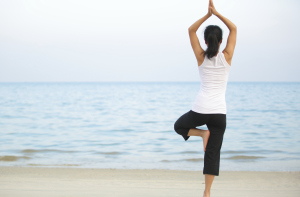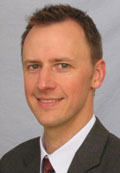Rotator Cuff Surgery in Los Angeles, CA
By Steven Meier
Anatomy of the Rotator Cuff
The rotator cuff (RC) is a group of four muscles and their tendons. The muscles of the rotator cuff are supraspinatus, infraspinatus, subscapularis, and teres minor. These muscles originate on the shoulder blade or scapula, and their tendons insert on the bone of the upper arm or humerus.
The infraspinatus muscle and teres minor muscles work synergistically to rotate the humerus laterally, while the supraspinatus muscle abducts the arm, that is, it moves the arm away from the body. The subscapularis muscle rotates the arm medially toward the body. [1][6]
Together, the muscles and tendons of the rotator cuff support and stabilize the shoulder joint. They aid the movement of the arm such as rotation and abduction. The shoulder joint is a ball-and-socket joint, and the RC reinforces this joint by preventing the bone of the upper arm from dislodging from the shoulder. [6]
Types of Rotator Cuff Injuries
Rotator cuff injuries affect millions of people worldwide. In the United States, about 4.5 million office visits are due to RC injuries. Rotator muscles and tendons are always under constant use. The risk factors for injury include repetitive stress on the shoulder, genetic vulnerability, diabetes, rheumatoid arthritis, aging. [7]
RC tears and injuries are typically found in individuals who engage in sports such as professional baseball pitchers, weightlifters, tennis players, and so on. The injury is also common among regular people because of wear-and-tear, falls, or degenerative tendon diseases.
There are different types of rotator cuff injuries or tears. These include a partial/incomplete tear, complete/full-thickness tear, degenerative tear, and acute tear.
- A partial or incomplete tear is due to damage to one of the tendons of the rotator cuff. In this case, the tendon is not completely severed.
- Complete/full-thickness tear: results in total damage to the tendons of the rotator cuff, and the tendons and muscles are separated from the humerus.
- Degenerative tear: can cause a partial tear that can lead to full-thickness RC tear. A degenerative tear can be due in part to the aging process or as a result of existing conditions such as diabetes. [2][5]
Rotator cuff injuries can also be classified or graded based on which single tendon or combinations of tendons were damaged.
Diagnosing a Rotator Cuff Injury
 Diagnosing rotator cuff injury is relatively easy. A detailed medical history and physical examination of the shoulder muscles, rotator tendons, and shoulder joints are required. C-spine/neck exam rules out neck pathology in cases where both shoulder and neck pains are reported.
Diagnosing rotator cuff injury is relatively easy. A detailed medical history and physical examination of the shoulder muscles, rotator tendons, and shoulder joints are required. C-spine/neck exam rules out neck pathology in cases where both shoulder and neck pains are reported.
Shoulder/shoulder girdle examination provides a thorough non-invasive assessment of the shoulder for symmetry, posturing, and range of motion (ROM).
Specific RC muscle strength can also be assessed through different tests such as the drop arm test for the supraspinatus, the hornblower’s sign test for the teres minor, the external rotation lag test for the infraspinatus, and the lift-off test for the subscapularis.
MRI scans and ultrasound images of the shoulder joint can reliably be used to diagnose RC tears. [4][7]
Rotator Cuff Tear Treatment
Symptoms of rotator cuff injuries range from acute to chronic pain during any movement of the arm and shoulder. Other symptoms reported by patients are muscle weakness, shoulder stiffness, loss of mobility, etc.
Treatment for rotator cuff injuries depends on the type (partial vs full RC tears) and the severity (asymptomatic or symptomatic) of the muscle/tendon tears. There are both surgical and non-surgical procedures for treating and managing RC injuries.
Non-Surgical Rotator Cuff Tear Treatment
Non-surgical treatment of rotator cuff injuries includes physical therapy, rest from repetitive activities/ heavy lifting, non-prescription of non-steroidal anti-inflammatory drugs (NSAIDs) such as Ibuprofen, and ice/cold packs to prevent swelling and inflammation. Cortisone injections can provide instantaneous relief for symptomatic patients to participate in physical therapy. [3][7]
Rotator Cuff Surgical Treatment
In the event where surgery is the choice for RC repair, there are three types of surgical procedures for repairing rotator cuff tears. These are open repair, arthroscopic repair, and mini-open repair. Open repair is often used for repairing large RC tears. Arthroscopic repair is less invasive. It involves the insertion of a camera (an arthroscope) through a small incision in the shoulder area to guide the surgeon during the repair of the RC tendons.
Surgery involves reattachment of the RC tendons to the head of the humerus using suture anchors to hold the tendons to the bone (or humerus). The anchors are usually made of metal or other biocompatible/organic materials that dissolve with time.
Rotator Cuff Surgery Recovery
Following RC repair, either via rotator cuff surgery or non-surgical treatment, physicians will recommend physical therapy/rehabilitation to patients. Full recovery after surgery can last up to six (6) months for certain patients. It is advised that patients keep the shoulder immobile after surgery for up to six weeks. During this time, the arm is supported by a sling to stabilize the arm and aid recovery. In many cases, Dr. Meier may administer regenerative medicine techniques, such as prolotherapy, PRP, or stem cell therapy, to boost the healing process and reduce pain.
Over time, the patient should be able to perform some minimal movements/exercises in the shoulder to improve range of motion and facilitate muscle strengthening. [4]
Citations
1. Jain, Nitin B et al. “Clinical examination of the rotator cuff.” PM & R : the journal of injury, function, and rehabilitation vol. 5,1 (2013): 45-56. doi:10.1016/j.pmrj.2012.08.019
2. “Four Types of Rotator Cuff Tears: Symptoms and Treatment Options.” Rothman Orthopaedic Institute, rothmanortho.com/stories/news-and-blog/rotator-cuff-tears.
3. Fucentese, Sandro F., et al. “Evolution of Nonoperatively Treated Symptomatic Isolated Full-Thickness Supraspinatus Tears.” The Journal of Bone and Joint Surgery-American Volume, vol. 94, no. 9, 2012, pp. 801-808.
4. “Rotator Cuff Tears.” Physiopedia, www.physio-pedia.com/Rotator_Cuff_Tears#cite_note-L.C3.A4dermann_et_al.-1.
5. “Rotator Cuff TearsOrthoInfoAAOS.” orthoinfo.aaos.org/en/diseases–conditions/rotator-cuff-tears/.
6. “Anatomy, Rotator Cuff – StatPearls – NCBI Bookshelf.” National Center for Biotechnology Information, 14 Nov. 2018, www.ncbi.nlm.nih.gov/books/NBK441844/.
7. “Rotator Cuff Syndrome – StatPearls – NCBI Bookshelf.” National Center for Biotechnology Information, 4 June 2019, www.ncbi.nlm.nih.gov/books/NBK531506/#article-28653.s9.
